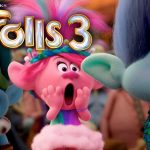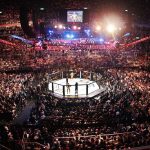𝙏𝙝𝙚 𝟭𝟯𝙩𝙝 𝙒𝙖𝙧𝙧𝙞𝙤𝙧 (𝟭𝟵𝟵𝟵)
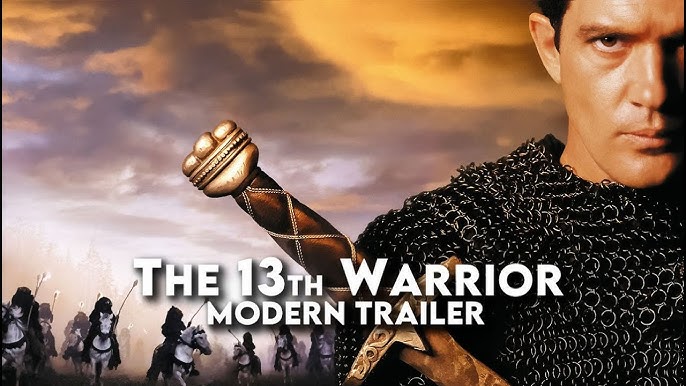
The 13th Warrior (1999) – Overview and Legacy
Based on Michael Crichton’s novel Eaters of the Dead (1976), The 13th Warrior is a historical action-adventure film directed by John McTiernan and later re-edited by Crichton himself. The movie blends historical fiction with Norse mythology, offering a unique retelling of the Old English epic Beowulf. Though it faced challenges during production and underperformed at the box office, the film has since garnered a cult following for its gripping narrative, atmospheric setting, and depiction of camaraderie.
1. Plot Summary
The story follows Ahmed Ibn Fahdlan (Antonio Banderas), a refined Arab poet and emissary exiled from his homeland. During his travels, Ibn Fahdlan encounters a group of Norse warriors led by Buliwyf (Vladimir Kulich). He is reluctantly enlisted as the 13th member of their group, a necessary component to fulfill a prophecy to confront a mysterious and deadly enemy, the Wendol, who are terrorizing a Norse village.
The Wendol, portrayed as a primitive and almost supernatural tribe, are believed to be the embodiment of an ancient evil. The group embarks on a perilous journey to face this threat, with Ibn Fahdlan adapting to the Norse culture and proving his worth as a warrior despite his initial hesitations and lack of combat experience.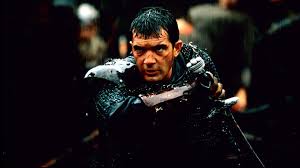
2. Key Characters
- Ahmed Ibn Fahdlan (Antonio Banderas): The protagonist, a cultured outsider who learns to adapt and earn the respect of the Norse warriors through courage and resourcefulness.
- Buliwyf (Vladimir Kulich): A stoic and noble Norse leader, reminiscent of the legendary Beowulf. His leadership and heroism are central to the story.
- Herger (Dennis Storhøi): A charismatic and humorous warrior who forms a close bond with Ibn Fahdlan.
- The Wendol: The antagonists, depicted as a savage tribe worshiping an ancient “mother” figure and using fear and mysticism to dominate their enemies.
3. Themes
- Cultural Exchange: The film explores the meeting of vastly different cultures, with Ibn Fahdlan’s refined intellect contrasting the brute strength and customs of the Norsemen. Mutual respect and understanding develop over time.
- Heroism and Sacrifice: Central to the film is the idea of selflessness in the face of overwhelming odds, with the warriors exemplifying courage and unity.
- Myth and Reality: The Wendol are portrayed as a blend of historical fact and myth, symbolizing the blurred line between superstition and truth in early medieval societies.
- Adaptation and Growth: Ibn Fahdlan’s transformation from an outsider to a respected warrior underscores the theme of personal growth through adversity.
4. Visual and Cinematic Style
- Atmosphere: The film’s dark, moody visuals capture the harshness of the Norse landscape and the sense of foreboding surrounding the Wendol threat.
- Action Sequences: The battle scenes are brutal and visceral, reflecting the raw nature of combat in the era.
- Music: Composed by Jerry Goldsmith, the score adds a sweeping and epic tone to the narrative, blending Eastern and Nordic influences to reflect the cultural intersection.
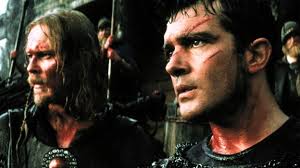
5. Reception
- Box Office: The 13th Warrior was a commercial disappointment, earning around $61 million against a production budget of $100+ million.
- Critical Response: Critics were mixed, praising the performances and atmosphere but criticizing the pacing and underdeveloped elements of the plot. Production issues, including reshoots and re-editing, likely contributed to the uneven reception.
- Cult Following: Despite its initial reception, the film has grown in popularity among fans of historical and adventure films. Its themes of camaraderie and cultural respect, as well as its depiction of Viking culture, have resonated with audiences over time.
6. Legacy
- Rediscovery: Fans and critics have reassessed The 13th Warrior in recent years, appreciating its ambition and unique approach to blending history with mythology.
- Viking Media Influence: The film helped pave the way for modern depictions of Viking culture and mythology in media, such as Vikings (2013) and The Northman (2022).
- Philosophical Undertones: Its exploration of unity amidst cultural differences and the blending of fact with folklore makes it a standout in its genre.
7. Memorable Quotes
- “Lo, there do I see my father. Lo, there do I see my mother, and my sisters and my brothers. Lo, there do I see the line of my people, back to the beginning. Lo, they do call to me. They bid me take my place among them, in the halls of Valhalla, where the brave may live forever.” – The warriors’ prayer before battle, a powerful and iconic moment in the film.
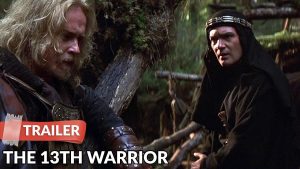
8. Why It Endures
The 13th Warrior remains a fascinating piece of cinema for its exploration of cross-cultural dynamics, gripping action sequences, and atmospheric storytelling. Its cult status stems from its uniqueness as a historical adventure film with philosophical depth, making it a memorable entry in the genre.
Would you like a deeper dive into the film’s themes, historical influences, or its connection to Beowulf? 🛡️

